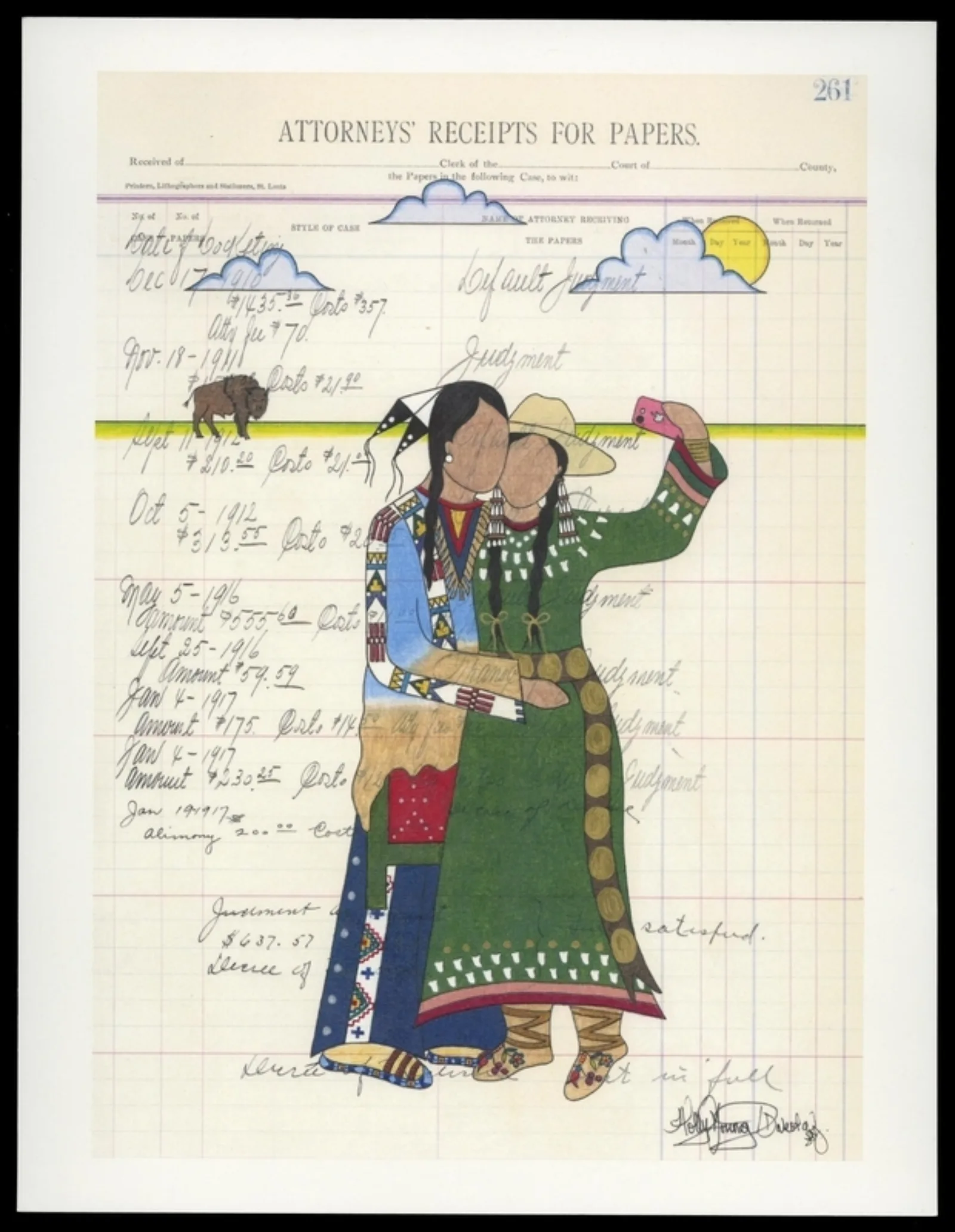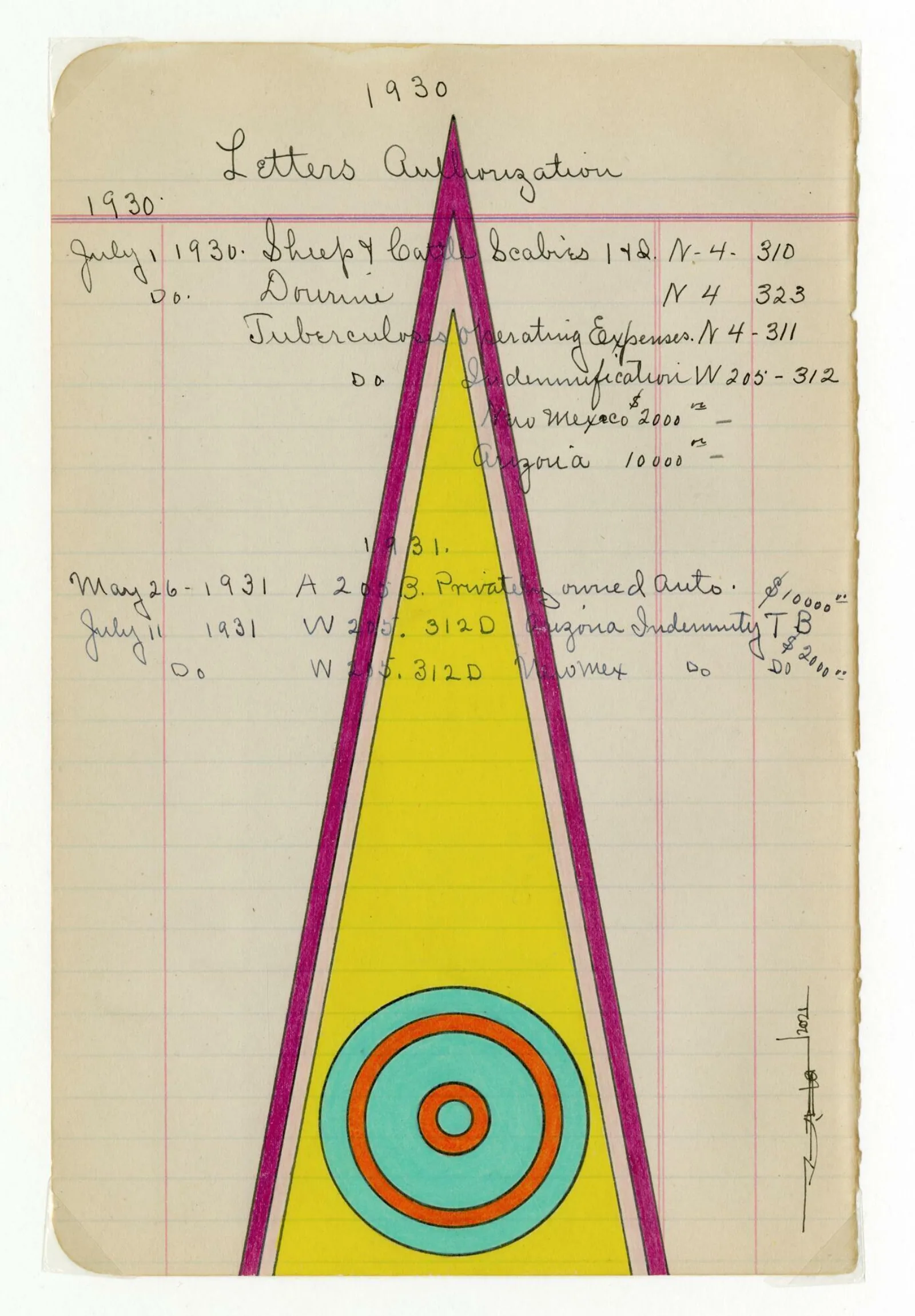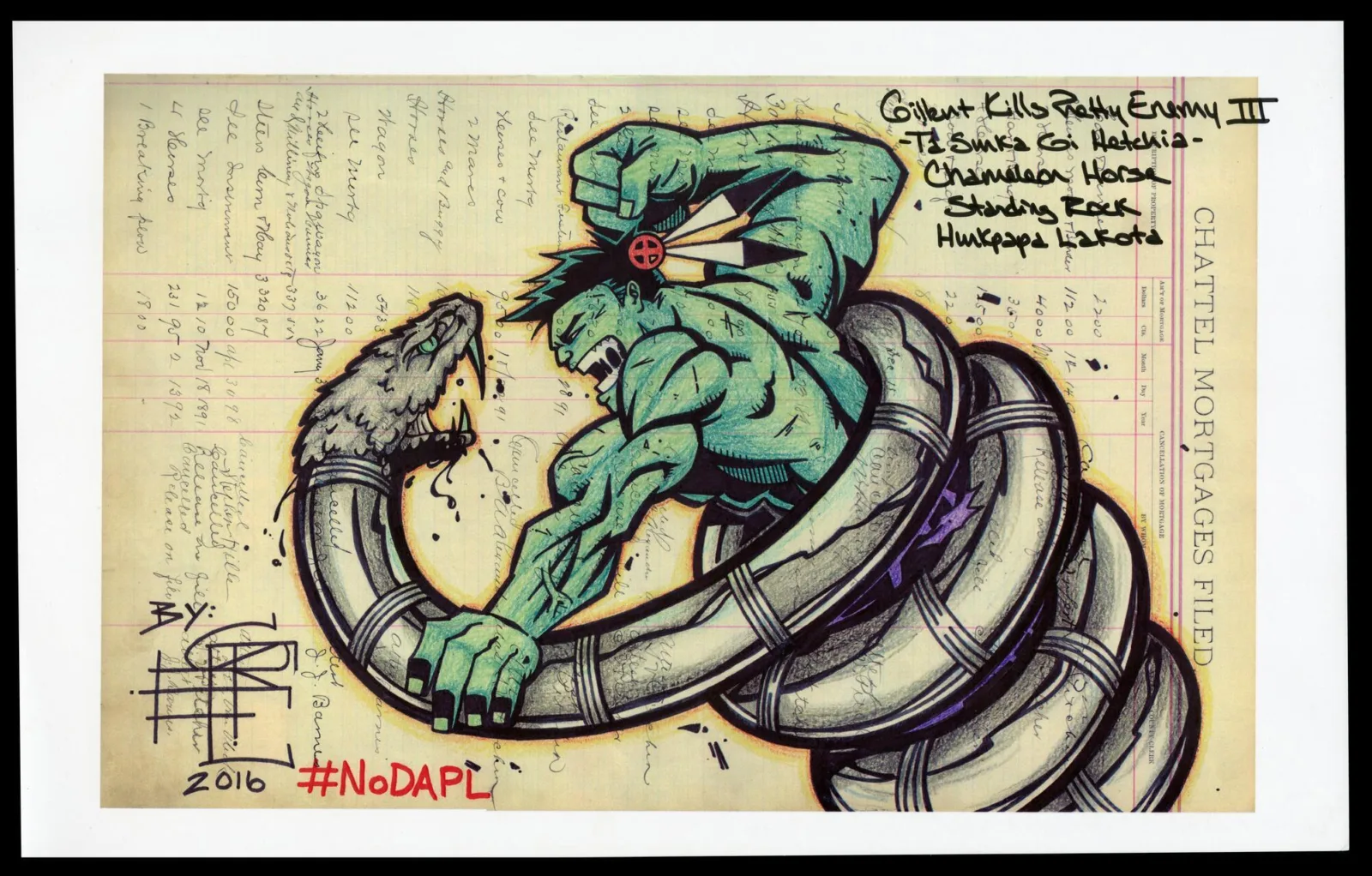Prior to the 1860s, Indigenous peoples of the Great Plains would paint on bison and other animal hides to decorate their lodgings, clothing, and tools, and to record historical events and common, everyday experiences. Histories recorded in this way typically include hunting and battle scenes, but also reflect courtship, dances, and ceremonial events.
In the wake of the near-extermination of the bison herds in the mid-nineteenth century, the lined pages of ledger books became favored places on which to document Native life. Compact and portable, ledger books were among the most common sources of paper on the Plains, traded among United States soldiers, agency employees, and missionaries and Native people. Similarly, colored pencils, watercolors, ink, and crayons became more available at this time. Ledger art thus refers to the adaptation of traditional means of recording history on animal hides to paper.
In the past fifty years, a revival of ledger art has been led by contemporary Indigenous artists. Dakota artist Holly Young combines traditional mediums – Northern Plains style beadwork and quillwork, in addition to ledger art – with contemporary vision and inspiration. Based in Bismarck, North Dakota, Young uses pen, ink, and colored pencil on paper removed from ledger books dating from the nineteenth and early twentieth centuries to depict contemporary experiences. Young’s work, and others, is included in our current exhibition, Native Pop!.

Similarly, New Mexico-based Piikani artist Terran Last Gun bridges the ancient to the contemporary by exploring notions of time, history, and Indigenous abstraction. Their work references Blackfoot painted hide lodges in their vibrant geometrical designs as well as the ledger paper used by Plains artists in the nineteenth century.

Some contemporary artists use reimagined ledger art as a means of protest or resistance. This ledger art was created by Hunkpapa Lakota artist Gilbert Kills Pretty Enemy III as a poster for #NoDAPL, a protest movement that began in 2016 to oppose the building of the Dakota Access Pipeline (DAPL) on the Standing Rock Indian Reservation. Here, Marvel’s The Incredible Hulk is transformed into a Native warrior, with symbols drawn from Native popular culture such as eagle feathers in his hair, battling a metallic, oil-spitting snake representing the pipeline.

The technological, artistic, and intellectual achievements of Indigenous peoples are rich and resilient, but threatened by erasure and assimilation if not taught, shared, and used in everyday life. Whether for fun, artistic expression, and personal exploration, or to strengthen ties with kin, assert the rights of their peoples, and maintain traditional technologies and cultures, by integrating traditional Native art forms with popular culture narratives and imagery, the ledger artwork created by Holly Young, Terran Last Gun, Gilbert Kills Pretty Enemy III, and other Indigenous artists engages in reimagining Native pasts, presents, and futures.
The works referenced here, among other works by Indigenous creators engaged with popular culture, can be seen in our current exhibition, Native Pop!, on-view March 20 through July 19, 2025.
About the Author
Lili Pangborn is Communications Coordinator at the Newberry.